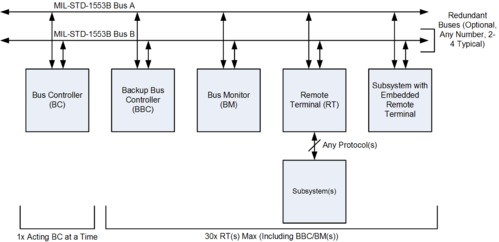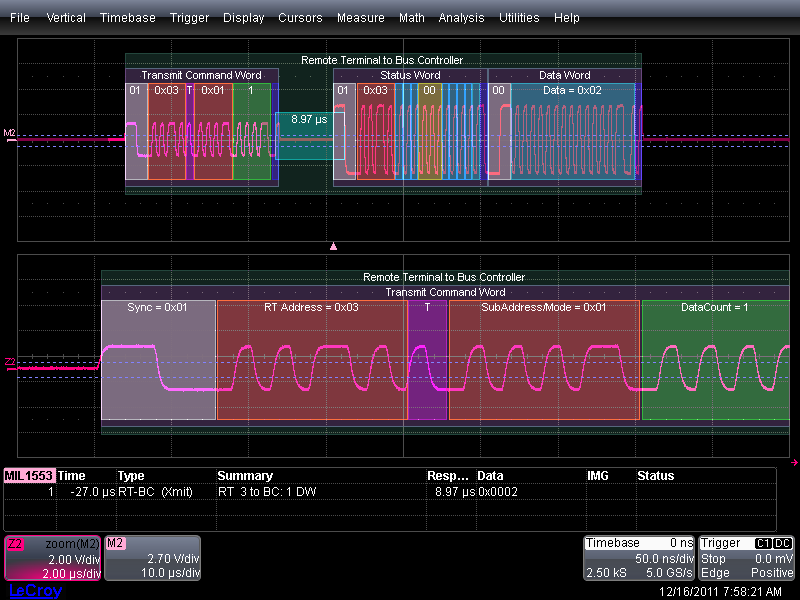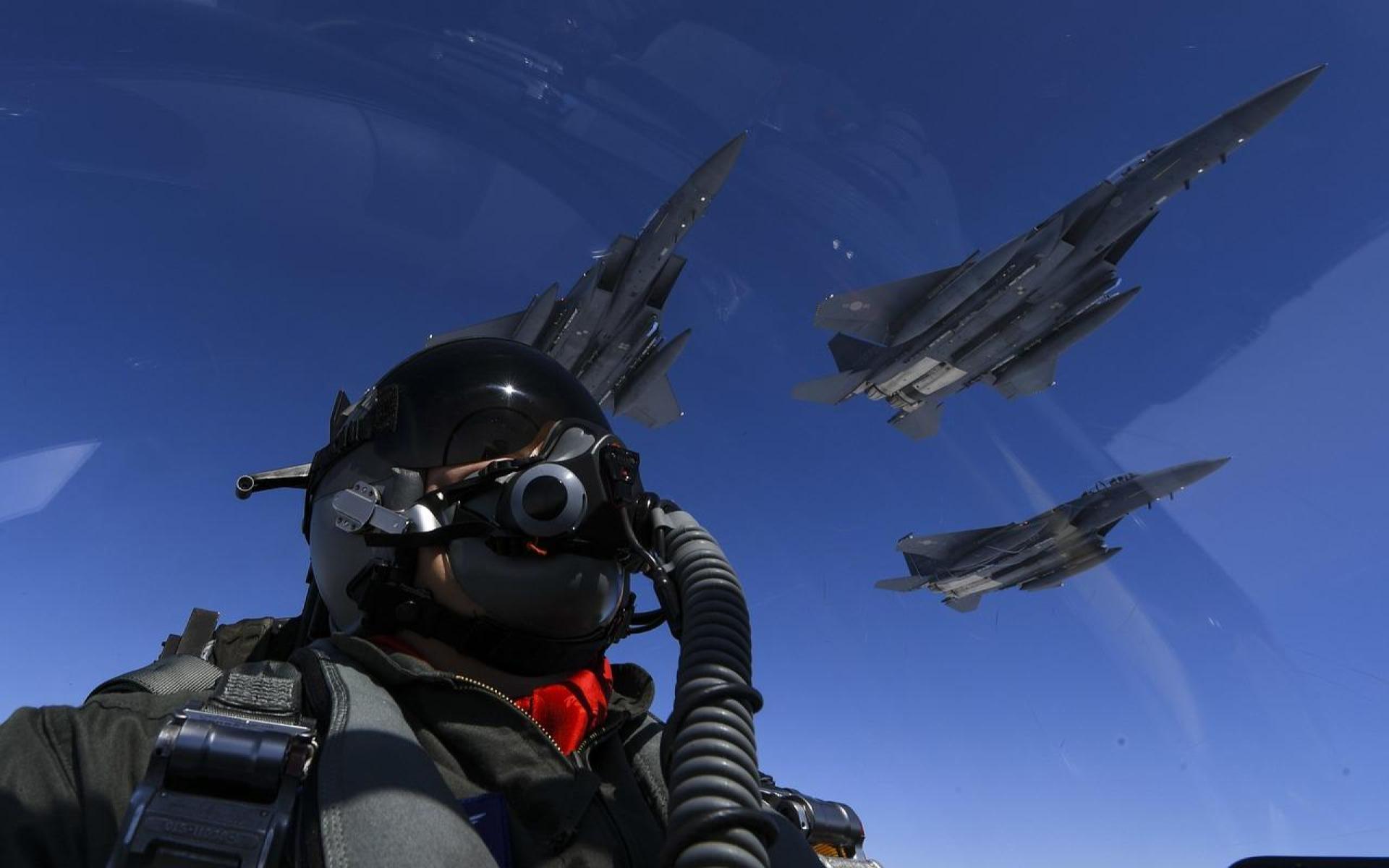Introduction
MIL-STD-1553 is a well-established and widely adopted standard in the field of avionics. It provides a robust and efficient communication protocol for data transfer between various avionics subsystems. In this comprehensive white paper, we aim to provide you with a deep understanding of MIL-STD-1553, its applications, and its significance in the aviation industry.
Overview of MIL-STD-1553
MIL-STD-1553, formally known as “Aircraft Internal Time-Division Command/Response Multiplex Data Bus,” is a military standard that defines the electrical and protocol characteristics for a data bus used in avionics systems. It was originally developed by the United States Department of Defense (DoD) to standardize communication between avionics subsystems.
Applications of MIL-STD-1553
MIL-STD-1553 finds its applications in various avionics systems, including aircraft, spacecraft, and military vehicles. It enables communication between critical systems such as flight controls, engine controls, weapon systems, and sensors. Its robustness, determinism, and fault tolerance make it suitable for safety-critical applications.
Key Features of MIL-STD-1553
MIL-STD-1553 offers several key features that contribute to its widespread adoption:
a. Dual Redundancy: The standard supports dual redundant bus architecture, ensuring high reliability and fault tolerance. In case of a failure, the system can seamlessly switch to the backup bus, maintaining uninterrupted communication.
b. Time-Division Multiplexing: MIL-STD-1553 utilizes time-division multiplexing, allowing multiple devices to share the bus efficiently. Each device is assigned a specific time slot for data transmission, ensuring deterministic and controlled communication.
c. Command/Response Protocol: The standard defines a command/response protocol, enabling devices to exchange data in a structured manner. Devices can send commands and receive responses, facilitating control and monitoring of subsystems.
d. Bus Controller and Remote Terminals: MIL-STD-1553 incorporates the concepts of a Bus Controller (BC) and Remote Terminals (RTs). The BC manages bus access and coordinates communication, while RTs respond to commands and provide data as required.
Benefits of MIL-STD-1553
MIL-STD-1553 offers several benefits that make it a preferred choice in avionics:
a. Reliability: The standard’s dual redundancy and fault-tolerant design ensure reliable communication, minimizing the risk of data loss or system failures.
b. Determinism: MIL-STD-1553 provides deterministic communication, meaning that data transmission occurs within specified time intervals. This is crucial for time-sensitive applications in avionics.
c. Interoperability: The standard’s wide adoption ensures interoperability between different avionics systems from various manufacturers, promoting compatibility and flexibility in system integration.
d. Security: MIL-STD-1553 incorporates security features such as data encryption and message authentication, protecting sensitive information from unauthorized access.

Implementation Considerations
Implementing MIL-STD-1553 requires careful consideration of various factors:
a. Hardware and Software: Avionics systems need dedicated hardware and software components compliant with MIL-STD-1553 to ensure seamless integration and proper communication.
b. System Design: Proper system design, including bus architecture, network topology, and data rates, is crucial for optimizing performance and reliability.
c. Testing and Validation: Thorough testing and validation processes are essential to ensure compliance with MIL-STD-1553 and verify the correct operation of the avionics system. Rigorous testing procedures, including functional testing, performance testing, and interoperability testing, should be conducted.
d. Documentation and Standards Compliance: It is important to maintain proper documentation throughout the implementation process, including design documents, test reports, and compliance certificates. Adhering to the standards and guidelines set by MIL-STD-1553 ensures compatibility and interoperability with other systems.

Future Trends and Advancements
As technology evolves, new trends and advancements are shaping the future of avionics communication. Some notable developments include:
a. Enhanced Data Rates: Efforts are being made to increase the data rates of MIL-STD-1553 to accommodate higher bandwidth requirements of modern avionics systems.
b. Fiber Optic Implementation: Fiber optic-based implementations are being explored to improve communication speeds and reduce electromagnetic interference.
c. Integration with Ethernet: Integration between MIL-STD-1553 and Ethernet is being explored to enable seamless communication between legacy systems and modern networks.
Conclusion
MIL-STD-1553 has been a cornerstone in avionics communication for decades, providing a reliable, deterministic, and robust data bus standard. This white paper has provided a comprehensive overview of MIL-STD-1553, its applications, and its significance in the aviation industry. Understanding its key features, benefits, and implementation considerations is essential for engineers, system integrators, and avionics professionals working in this field.
As avionics technology continues to evolve, MIL-STD-1553 remains a vital communication standard, facilitating safe and efficient data transfer between critical subsystems in aircraft, spacecraft, and military vehicles. By adhering to this standard and leveraging its advantages, avionics systems can achieve seamless integration, interoperability, and reliability.
To harness the full potential of MIL-STD-1553, it is important to stay updated with the latest advancements, follow best practices in implementation, and undergo rigorous testing and validation procedures. By doing so, avionics professionals can ensure the successful integration of MIL-STD-1553 and contribute to the development of cutting-edge avionics systems.
References:
MIL-STD-1553 – Department of Defense Interface Standard. (n.d.).
Avionics Data Bus: A Review of MIL-STD-1553B and ARINC 429. (2017).
MIL-STD-1553 Tutorial. (n.d.).
MIL-STD-1553 Tutorial Series. (n.d.).
MIL-STD-1553: The Aviation Industry’s Go-To Data Bus. (2021).
MIL-STD-1553 Wikipedia
MIL-STD-1553 European Space Agency
MIL-STD-1553 UEIDAQ
MIL-STD-1553 NASA





